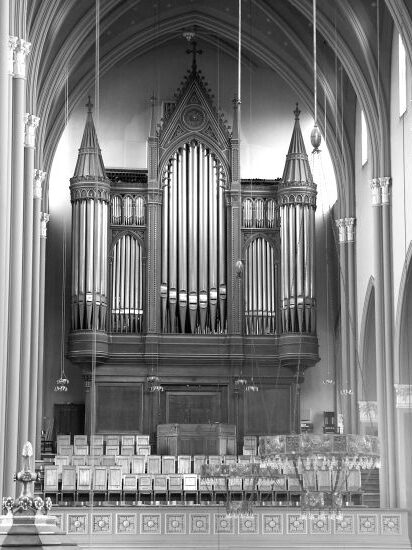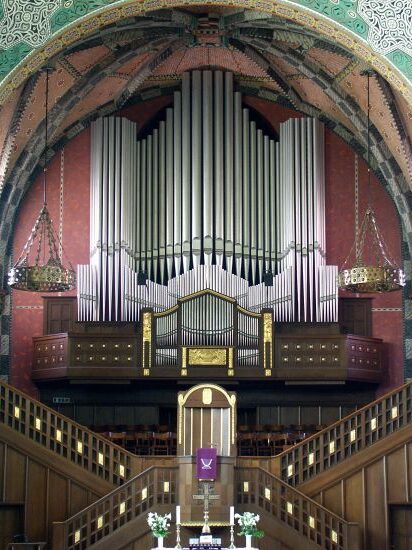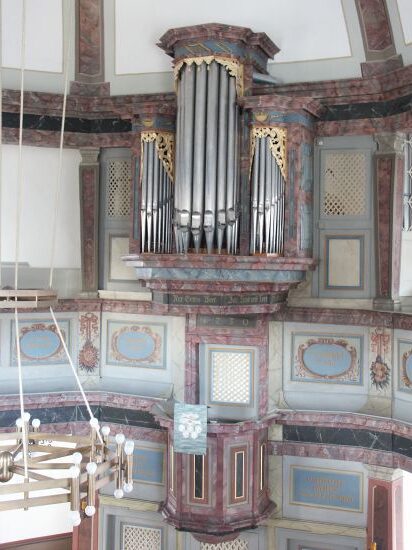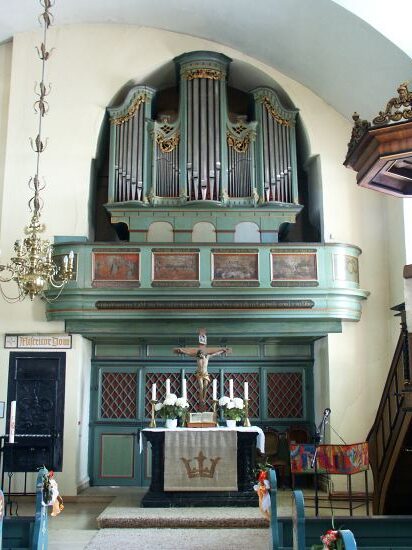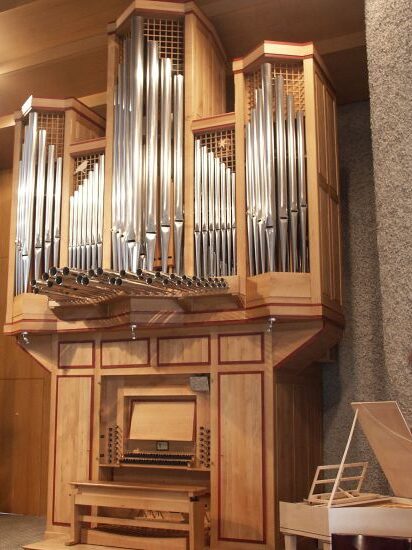Organs
Wiesbaden has a large number of historic organs, which are not only found in churches. The Marktkirche has the oldest and largest instrument in the city center, which was installed in 1863. Most of the organs have been installed in the city's newly built churches and community centers since the mid-1960s.
Organs are not only found in Christian churches, but also in secular rooms, e.g. in the Thiersch Hall of the Kurhaus, in the mourning hall of the South Cemetery, in the auditorium of the Elly Heuss School, in the State Museum (Museum Wiesbaden) and in several private houses. Wiesbaden's organ history is rich in historical instruments because there was comparatively little war damage. However, many organs have been modified over the course of time in order to adapt them to current sound ideas and technical possibilities. In the meantime, however, instruments have also been restored and returned to their original condition.
The largest and oldest organ in the city center is located in the Marktkirche. It was installed by the Walcker company from Ludwigsburg shortly after the church was consecrated in 1863. The imposing case as well as most of the pipes and individual windchests have been preserved. It has been rebuilt, enlarged and technically modified several times; together with the choir organ installed in 1982, it currently has 85 stops. The action is electric and equipped with the latest playing aids, including a self-playing system. The Walcker company built four other large instruments, three of which have been preserved:
The organ in the Lutherkirche (1911, III/50) was extensively restored and reconstructed in 1987 and 2012, while the organs in the Ringkirche (1894, now III/37) and the Oranier-Gedächtnis-Kirche in Biebrich (1905, III/42) were heavily modified. Three large organs in Wiesbaden date back to the post-war period: the Steinmeyer organ in the Kurhaus (1954, III/48), the Späth organ in St. Elisabeth (1962, today IV/55) and the Seifert organ in St. Bonifatius (1954, today III/52). The last two instruments were later heavily modified: in 1985, St. Boniface received a new organ case, new windchests with mechanical action and many new stops (including three electronic pedal stops retrofitted in 1998); in 1990, the organ in St. Elisabeth was moved to the chancel and also equipped with new cases, chests and stops.
The majority of Wiesbaden's organs were built between 1965 and 1985, when many churches and community centers were built, especially in new districts and suburbs. In addition, however, there is still a rich stock of old, mostly small instruments that have survived the centuries in the old village churches, often with only a few changes. The oldest organs are in Frauenstein, Naurod (1735) and Erbenheim (1790), they are all single-manual (but with pedal) and date from the 18th century.
Two small baroque organs can also be found in the Landesmuseum (1750) and in a private home (1730). Instruments from the late 19th century have been preserved in Medenbach (1876), Breckenheim (1878), Sonnenberg (1883), Nordenstadt (1886), Auringen (1890), Dotzheim (1893), Delkenheim (1894) and Igstadt (1904). Three of them were built by organ builder Christian Friedrich Voigt (or his son Heinrich) from Igstadt, who installed many instruments in the Rhine-Main region. The organ builders Gebr. Mahr had previously settled in Wiesbaden, but only the Erbenheim instrument from 1790 has survived here. Since 1986, new organs have been installed in Wiesbaden again using historical production methods (mechanical, suspended actions, self-supporting solid wood cases), with French-Alsatian companies also being involved.
Overall, this results in a very colorful picture of organs of different sizes, construction periods, tonal orientation, technical equipment and quality. The large number of historical instruments from the late 19th and early 20th century is rarely found in Germany.
Literature
Organs in Wiesbaden, Wiesbaden 2003.
